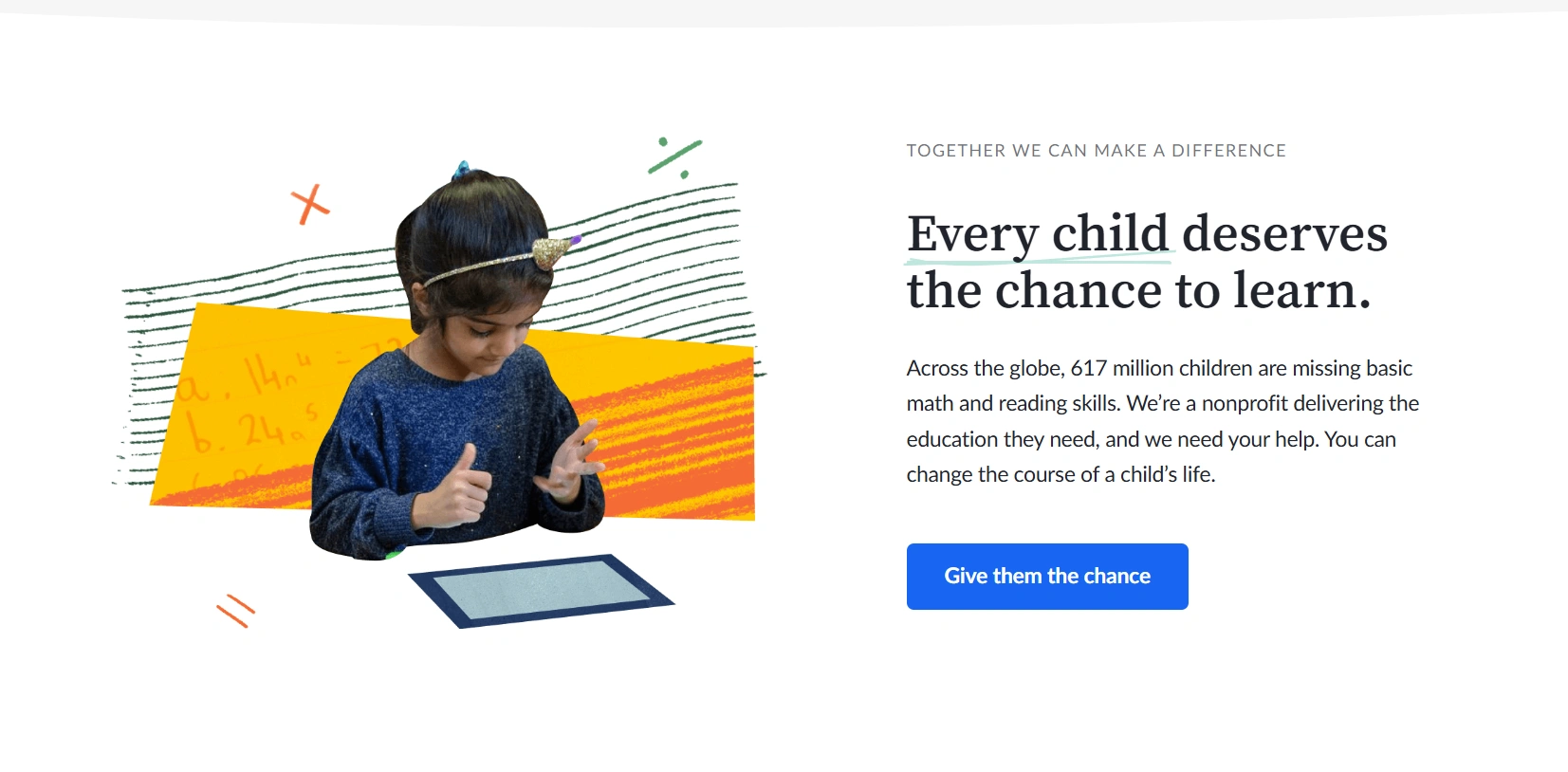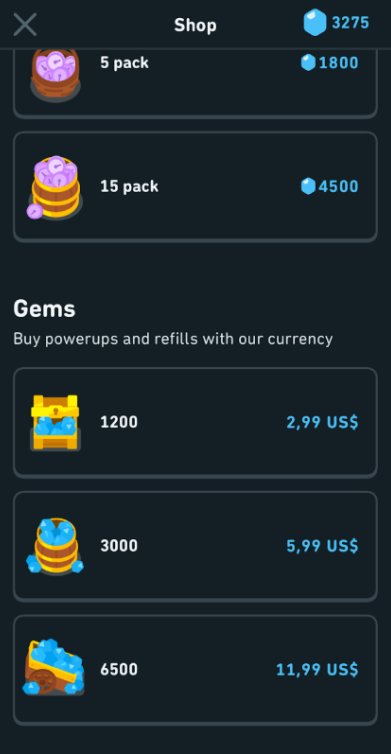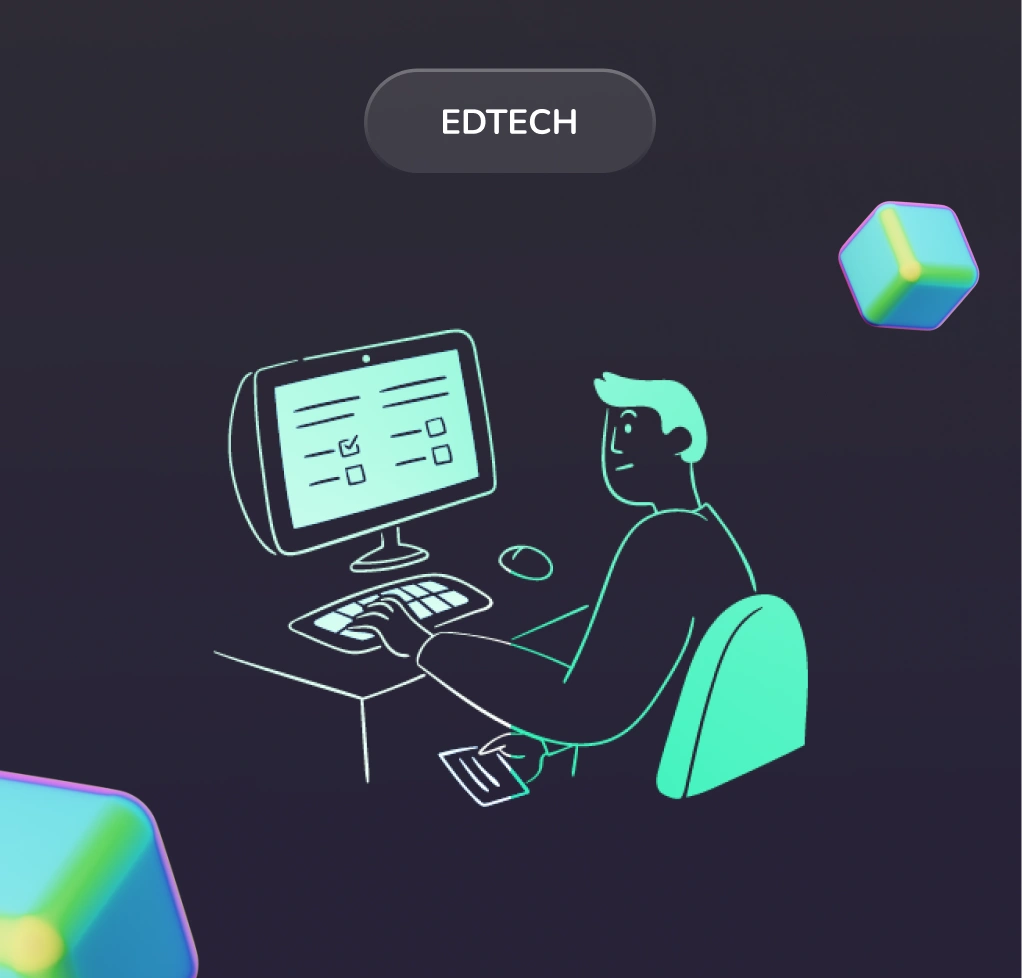
In less than 10 years, EdTech companies have become an integral part of the educational landscape. Although online courses and apps started rising in the mid-2010s, they gained momentum in the post-pandemic world.
According to Fortune Business Insights, the global EdTech market is projected to reach $433.17 billion by 2030, growing at a compound annual growth rate (CAGR) of 18.3% between 2023 and 2030.
However, launching a successful EdTech startup isn’t just about great ideas. You need to determine how to support your ideas financially. Without a solid revenue model, even the best concepts struggle to survive. So, today, we’ll explore strategies to monetize your startup to ensure it remains engaging and financially sustainable.
The Importance Of Monetisation in the EdTech
Monetization is crucial for the success of any EdTech startup. It’s not just about generating revenue or returning EdTech funds to investors. A properly made monetization strategy is about creating a self-perpetuating and thriving system. The constant incoming revenue supports improving existing content, new courses, and features. You can also reinvest some part of A reliable revenue stream that reduces dependence on investors and grants, which makes the business more resilient to market fluctuations.
However, balancing free and paid content is a delicate art. Users expect value for their money, and poorly implemented strategies can discourage them. One of the latest examples is the Duolingo MAX subscription, where people had to pay $30 just to chat with the AI. Many people in forums noticed that it’s the same that they can do with ChatGPT Plus, but even for the $10 cheaper. So, if Duo’s team still wants to keep the MAX plan, they need to modify it to make it viable.

Source: Reddit
Ethical Considerations EdTech monetization
If the business wants to earn money with ads, it needs to address multiple ethical considerations about data privacy. Businesses need to collect as much data as possible to get precisely targeted ads, but they can’t do this.
If a business collects too much data or keeps data collection secret, users can use it. Thus, the modern EdTech industry needs to strike a balance between personalization and data privacy.
5 Most Common EdTech Monetization Approaches In 2025
- Freemium
- Subscription
- One-time Purchase
- B2B Monetization
- Microtransactions
- Certification-based
Freemium Model in EdTech
The freemium model is one of the most popular EdTech startup revenue models. Under this approach, users will get free access to the service’s basic features while paying for additional content or features. The most well-known freemium startups are:
- Duolingo: Offers free access to all language lessons and basic features, with a paid plan providing extras like offline lessons, no ads, and advanced analytics.
- Coursera: Provides free courses but charges for certificates of completion or access to specialized classes via subscription plans.
- Khan Academy: Delivers free educational resources, such as videos and exercises, with optional paid services for more personalized learning or assistance.
- Skillshare: Grants free access to a limited content selection, while a paid subscription unlocks all courses, primarily in creative and skill-based fields.
The free tier helps lure many users, spreading brand awareness. Some free users convert to paying customers, providing a steady revenue stream.

Source: Khan Academy
However, many users stick to the free version, which often meets their basic needs (“it’s good enough”). To financially support free users, you, as the business, may need to incorporate ads, which can detract from the user experience.
Subscription Model in EdTech
The subscription model charges users a recurring fee for continued access to a platform. Startups in the EdTech industry use this model if they want to frequently update their content, keeping users engaged over the long term. All those actions require investments, and subscription is one of the most stable ways to find those actions. The most well-known subscription-based EdTech services are:
- MasterClass: Offers premium courses by popular experts.
- LinkedIn Learning: Focuses on professional development, providing access to hundreds of courses upon completion.
- Udemy (Udemy for Business): While Udemy primarily operates on a pay-per-course basis, its business subscription model offers companies and organizations access to an extensive course library for employee training.
Platforms may offer multiple subscription tiers with additional services and content for premium users. Regular payments also incentivize users to actively engage with the platform.

Source: Masterclass
However, you need to keep in mind that the EdTech industry is known for its high user churn, as the “pay, learn, unsubscribe” is pretty common here. If you don’t provide users with new content and innovative tools, they will easily switch to competitors.
One-time Purchase Model in EdTech
Under the one-time purchase model, users pay a single fee for access to a specific course, material, or resource. It could include a single course, a package of courses, a learning tool, or specialized content such as books or exercises. Once payment is made, users have unlimited access to the purchased content without further payments. The most well-known examples of such approach in the EdTech industry is:
- Udemy: Users can buy individual courses and gain full access to the course materials upon purchase.
- Skillshare: While Skillshare primarily offers a subscription model, certain specialized resources or individual courses can be purchased as one-time purchases.
- Coursera: Coursera offers one-time payments for specific courses or specialized programs, such as professional certifications or diplomas.
- Teachable: A platform where instructors can sell courses on a one-time purchase basis. After purchase, users get unlimited access to all lessons and materials.
This model is well-suited for users who want to improve specific skills without committing to an ongoing subscription. The absence of time limits is another benefit for constantly busy modern consumers.

Source: Coursera
Meanwhile, this approach leaves no ongoing revenue for you. This model relies on users making individual purchases, making it harder to predict cash flow than subscription-based models. At the same time, you need to support infrastructure, as you need to host posted content for years. Otherwise, you need to prepare all users how long you will have the content on the servicers BEFORE THEY purchase your content. Otherwise, it violates consumer protection laws.
B2B Monetization Model in EdTech
The Business-to-Business (B2B) model is one of the EdTech trends that allows educational startups to rely on a stable income while remaining scalable. Organizations subscribe to EdTech platforms to offer a variety of courses to their employees. It allows companies to train large groups of staff at a fixed cost.
Many companies use platforms to manage training, track employee progress, and create custom content. Corporate training with LMS platforms is a long-term investment for businesses. High-quality services can secure client loyalty for years. The most well-known examples of services with a B2B monetization approach are:
- LinkedIn Learning: Offers courses for professional skill development that are accessible to businesses. Companies can subscribe to provide their employees with access to courses on topics ranging from leadership to technical skills.
- Coursera for Business: Enables organizations to purchase subscriptions for employee access to courses from universities and leading companies.
- Udemy for Business: Provides businesses with a library of courses for employee training.
- Skillsoft: Focuses on corporate learning, offering organizations access to courses, training programs, and certifications for employees across various roles.
However, you still should consider the peculiarities of B2B monetization. It’s risky to rely on a small number of clients can be risky. If you want to start B2B monetization of your project, diversify your client base to mitigate this risk.

Source: Udemy Business
Microtransactions Model in EdTech
Here, users make small payments to unlock some content or features on the platform. These payments can unlock lessons, resources, books, sections, or premium features. Language apps are fans of this monetization approach:
- Duolingo: Users can purchase additional features, such as ad-free experiences, level repetitions, or bonus items (like extra lives to continue lessons). Special plans are also available to fast-track progress.
- Quizlet: Allows users to create flashcards and practice tests. Premium features, like advanced card creation tools or performance analytics, are available via microtransactions.
This monetization method is often used with a freemium model, providing free basic access while offering optional paid enhancements.

Source: Duolingo
However, some users can feel discouraged. It’s no wonder since this approach creates a “pay-to-win perception”. So, those platforms may have a high user churn. Meanwhile, you, as a business, may have unpredictability in revenue. Unlike subscriptions, income from microtransactions can be inconsistent and hard to forecast.
Certification-Based Model
This EdTech funding model allows users to learn for free but charges a fee to obtain certificates upon course completion. Users may also pay for additional services such as identity verification, exams, or personalized instructor consultations. Most people know those certification-based platforms:
- Coursera: Most courses here are free, but certificates cost $30–$100, often issued by universities or corporate partners to verify course completion.
- edX: Similar to Coursera, it provides free materials with paid certifications.
- Alison: These platforms provide free courses, where students later pay for certificates.
The open access to knowledge attracts a large and diverse audience, fostering brand trust. Students can access resources, spending hours exploring and engaging with the platform. If you create a referral program with the motto “Bring 10 friends and get one course for free”, they will use all their networking to get the desired certificate.
However, this model depends heavily on users’ willingness to pay for certificates. You, as the business, need to make your certificates valuable by collaborating with reputable colleges and universities.
How To Choose The Best Monetization Strategy For Your Education Startup
The optimal EdTech funding strategy depends on factors such as the target audience, product type, business goals, and user experience. First, analyze the market and your target audience’s demographics, needs, and habits. Research successful EdTech platforms to identify proven strategies.
Perform a SWOT analysis to refine an existing approach instead of creating an entirely new one. Then, ask yourself what learning goals your users may have, how they spend their learning time, and their special interests. The next step is to decide your service type and what content you’ll post, as it directly impacts monetization:
- Dynamic courses with ongoing engagement: Subscriptions work well for users who seek continuous access to new materials.
- Personalized services: Models like one-time purchases or B2B subscriptions suit expert consultations or individual learning plans.
- Micro-courses or occasional engagement: Microtransactions or one-time purchases are ideal for bite-sized content.
EdTech software development may take months, and it’s acceptable. It’s better to spend extra time on developing and testing rather than releasing an unfinished platform with bugs.
Ensure your platform is scalable. It’s better to have a goal-oriented mentality rather than stick to the “we are just a small startup” mentality. If you develop your platform with scalability in mind, it will be easier to expand.
Perform internal testing, fixing all major bugs. Test usability and user preferences with focus groups and A/B testing with real users. Offer incentives to real users who decide to become testers, such as a free month or a discount. Be creative and give your target audience what they want.
Meanwhile, don’t forget about users with limited budgets. They can become your word-of-mouth promotion channel and will recommend your platform to their peers. You can try launching a freemium model, offering a bunch of tier subscriptions, or adding a “buy now, pay later” option.
Tech Aspects Of The EdTech Platforms Monetization
Once you’ve chosen preferable EdTech business models, it’s time to decide what payment systems to integrate. Popular options include Stripe, PayPal, Apple Pay, Google Pay, Braintree, Adyen, and Worldpay. If you want to provide a “Buy Now, Pay Later,” you can try to implement Klarna.
To maximize security on your platform, implement two-factor authentication (2FA) for added account and transaction security, combining passwords with SMS or email confirmations. Use potent encryption methods like SSL certificates and tokenization to minimize the risk of breaches.
Later, thoroughly test your payment mechanisms across all stages. We understand that it can be complex, and that’s why we offer our help to you. We, at Corpsoft Solutions know how to integrate even the most complex payment systems to make them easy to use both for your customers and you as a business.
Challenges Of EdTech Platforms Monetization
Everything has its price, and EdTech app development is no exception. Monetization of EdTech apps comes with various risks. The biggest pitfall is selecting a strategy that doesn’t align with user needs.
If the model fails to resonate, users simply won’t subscribe. If you decide to run a freemium app, which is common in the education niche, you need to ensure that it’s engaging in a free version and has unique features for paid plans. If the free version lacks compelling features, it won’t entice users to upgrade.
Conversely, overpriced premium plans deter users. Let’s take Duolingo as an example one more time. While their basic premium option for $6-10 (depending on the location) is thriving, their MAX plan receives mixed reviews. Their Super plan provides just enough to justify its price, so users truly adore it. Meanwhile, the MAX plan lacks features for its price, which may push away potential clients.
Maintaining high-quality content while monetizing is another challenge. Overloading freemium models with ads can frustrate users. They will feel abandoned and leave the platform. Meanwhile, offering too little free or affordable content risks users switching to competitors.
Aggressive paywalls or excessive microtransactions can also harm the user experience, making the app feel overly commercialized rather than educational. It’s vital to strike a balance between earning money and providing value. And the last common challenge for the EdTech developer is to ensure the safety of your payments. You need to make them simple yet secure. Complex procedures or the lack of support will frustrate users, reducing conversions.
Wrapping Up: The Importance Of Choosing Proper EdTech Business Models
Monetization is one of the first things that you need to think about while planning your startup. Self-sufficiency is crucial even to the educational niche. Whether you go for freemium, subscription, pay-per-use, ads, or a hybrid approach, always ensure that the chosen approach aligns with your users’ needs.
You can combine different strategies and change as needed, but remember: it’s all about making education accessible. Keep in mind that retaining users is easier and cheaper than acquiring new ones, and high-quality content is a crucial part of the marketing strategy for EdTech.
Keep innovating, stay flexible, and never lose sight of your core educational mission. We, at Corpsoft Solutions, have a vast experience in software development, including EdTech startups. With our deep expertise in global markets, we’re here to help guide you through every step. Book a free consultation today!
Subscribe to our blog

